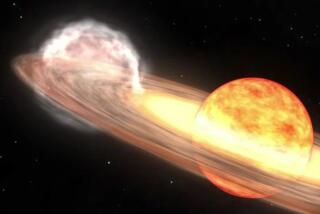Explore Mercury from your desktop
As the first spacecraft to orbit Mercury, the detailed images beamed from Messenger’s cameras are enabling scientists to prowl the innermost planet’s hellish terrain, and creating new horizons for students and teachers.
In one of the most entertaining public science education projects undertaken by NASA, Messenger’s Web page gives users a chance to zoom in on Mercury’s exotic, sun-seared landscapes with a blend of high-definition photographs, explanatory texts and charts, and a map of 99% of its tortured surface.
As for science, NASA’s invasion of Mercury allows students and teachers to be almost as intimate with the discovery process as the scientists and engineers involved, according to Nancy Chabot, Messenger Mercury dual imaging system instrument scientist.
“Messenger’s mission is far from over,” Chabot said, “and Mercury continues to surprise us.”
Judging from the more than 88,000 images collected during Messenger’s first year in orbit, few planets are as fascinating.
Users get good, close looks at bizarre features such as the planet’s huge and craggy crater called Caloris, from the Latin word for “hot.” They can also peer into the permanent shadows of polar craters that may be shielding lakes of frozen water.
Then there are the weird depressions, or “hollows,” smeared with mysterious reflective materials that have scientists scrambling for answers. “We didn’t know they were there until Messenger became the first spacecraft to orbit Mercury in 2011,” Chabot said. “We haven’t found any craters on top of them, which implies that they are really young.
“Mercury still has a lot to teach us,” Chabot added.
Return to the Science Now blog.
louis.sahagun@latimes.com







